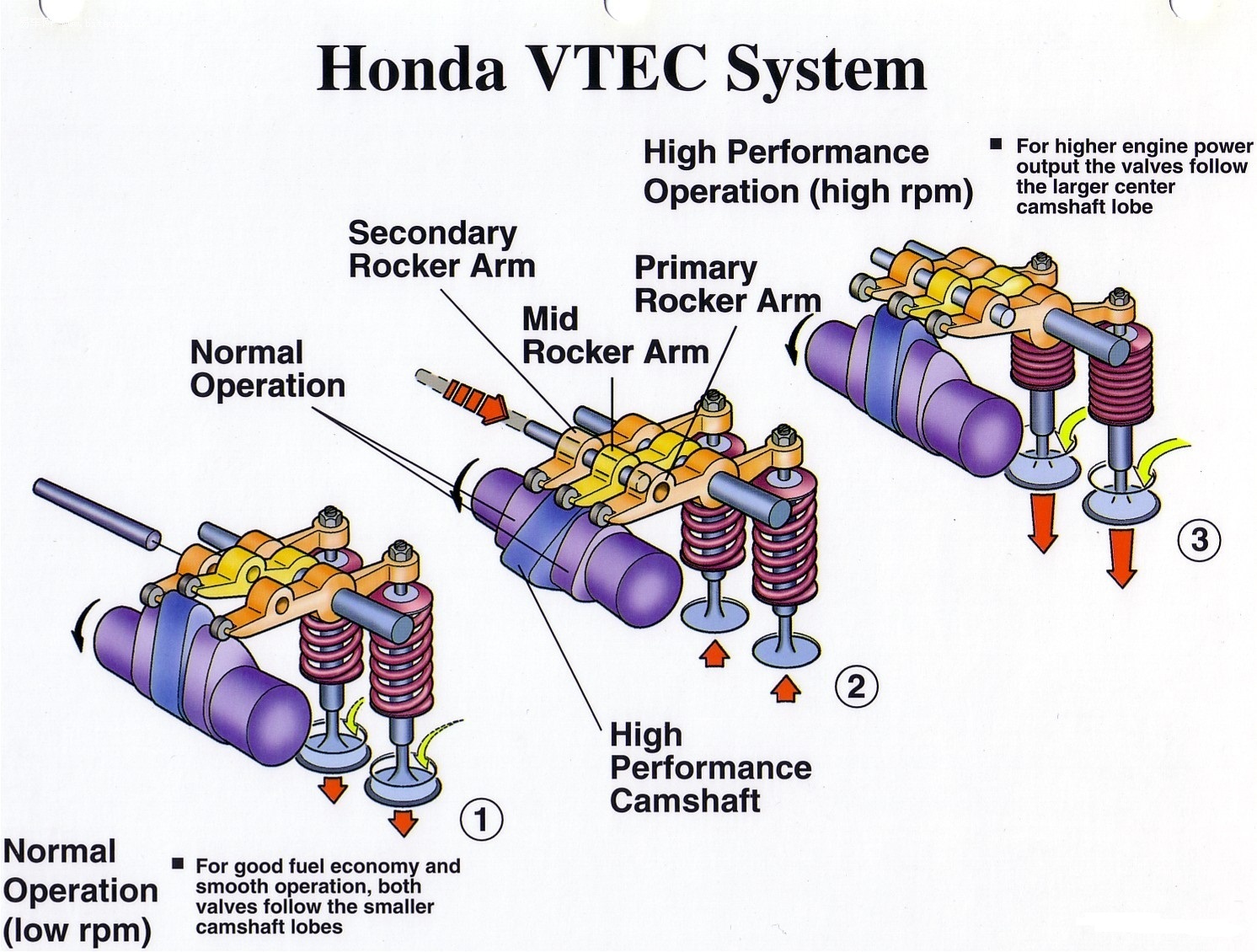Working Principle of i-VTEC Technology from Honda
Posted: 2015-05-08 04:02:55 Hits: 7182
i-VTEC technology is not only special skill of Honda, but also originator of CVVT for other manufacturers. Currently, Honda has already popularized i-VETC technology in cars sold in China, including Earth Dream engine which is used by Fit, Accord, CRV and Spirior.
Working principle of i-VTECT technology
In medium or low revolving speed, engine does not need high mixed air inflow to keep stability of revolving speed and reduce fuel consumption and pollutant emission. However when engine reaches to high revolving speed, the engine needs high air inflow to meet the requirements of high power output. Phase position and lifting of inlet valves on engine are two factors deciding air inflow of cylinders directly. In terms of common engines, valve timing and valve lift are fixed, after the engines being made out, which cannot meet the requirements of engines for air intake and exhaust to fit the different revolving speed. For this, people hope to make a type of engines whose cam profile (profilogram of cam) can fit any revolving speeds so that the engine can achieve the best valve timing in high or low revolving speed. So, variable valve timing came out. In 1989, Honda released self-developed Variable Valve Timing and Valve Life Electronic Control System (VTEC in short), the first valve control system which can control valve timing and lifting at the same time around the world.
Just like common engines, VTEC engine also has 4 air valves, cam shaft and rockers in every cylinder. What different from common engines is the quantities of cams and rocks and regulation methods. Medium and low revolving speed use small angle cams. Valve timing and lifting on two air valves are different from each other in medium and low revolving speed. Then, an air valve has quite small lift, which does not join in the processes of air inflow. Inlet passage is almost equivalent to single inlet engine. In high revolving speed, VTEC magnet valve control flow direction of hydraulic oil. Two rockers become a whole. Admission cam having the longest valve timing and the largest lifting drives air valves. At the moment, two inlet valves proceed at the same time based on outline of large cam. Compared with low revolving speed, it increases flow area of air inflow and duration of valve time, improving dynamic property of engine in high revolving speed. For the two output curve having completely different performance, engineers from Honda make them come true on an engine.
However, altering of VTEC system to valve timing is still periodicity, which means that altering valve timing is just a jump in a certain revolving speed. It is not continuous variable in a range of revolving speed. To improve the performance of VTEC system, Honda innovated constantly and released i-VTEC technology, which added with a device called as VTC (Variable Timing Control) – a group of inlet valve camshaft timing variable control mechanisms (i-VTEC=VTEC+VTC). Overlapping time between timing and opening of inlet valves are variable, controlled by VTC. Imported with VTC mechanism, engine has suitable valve timing in a wide range of revolving speed, which highly improves performance of engines to a large extent.




